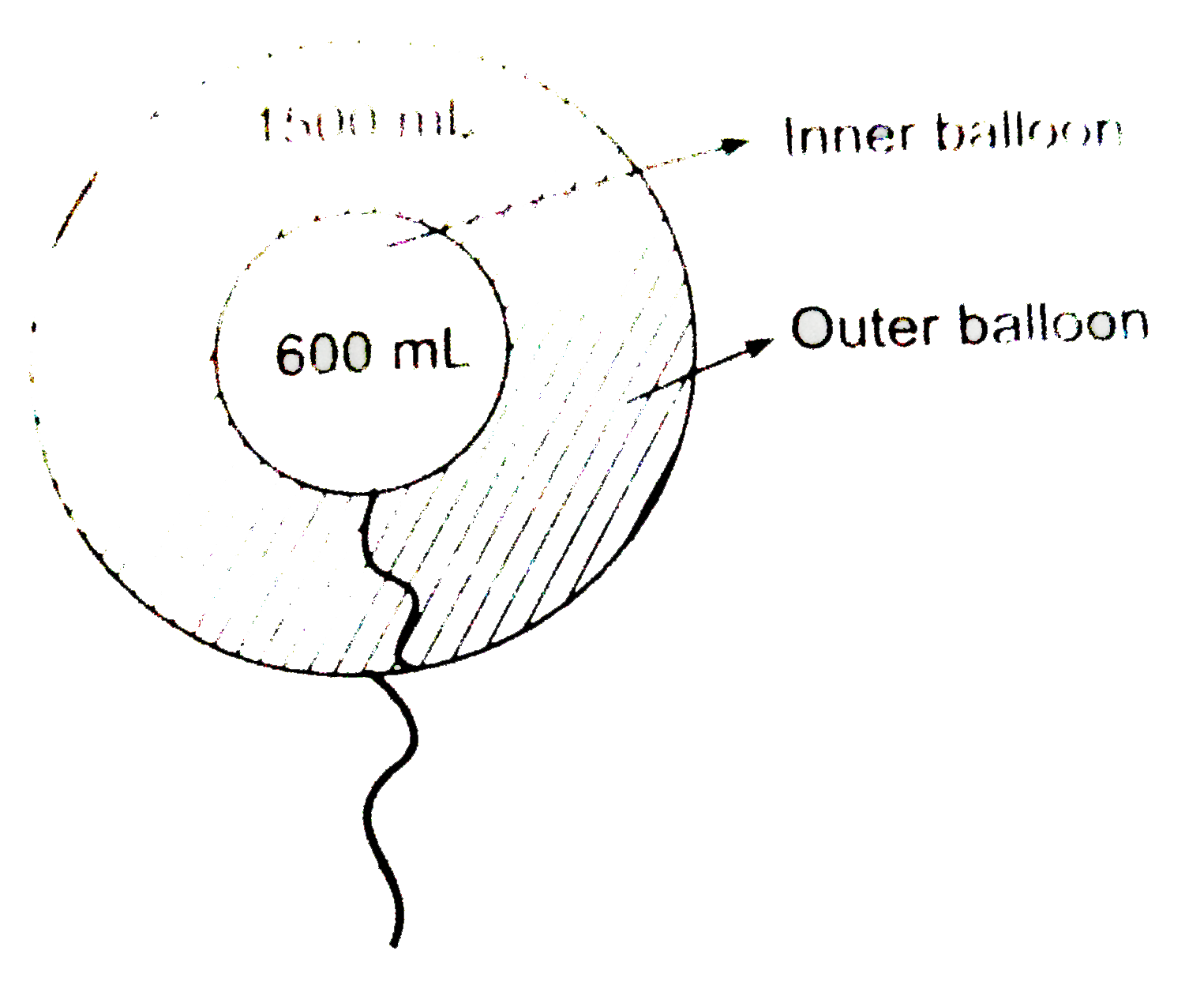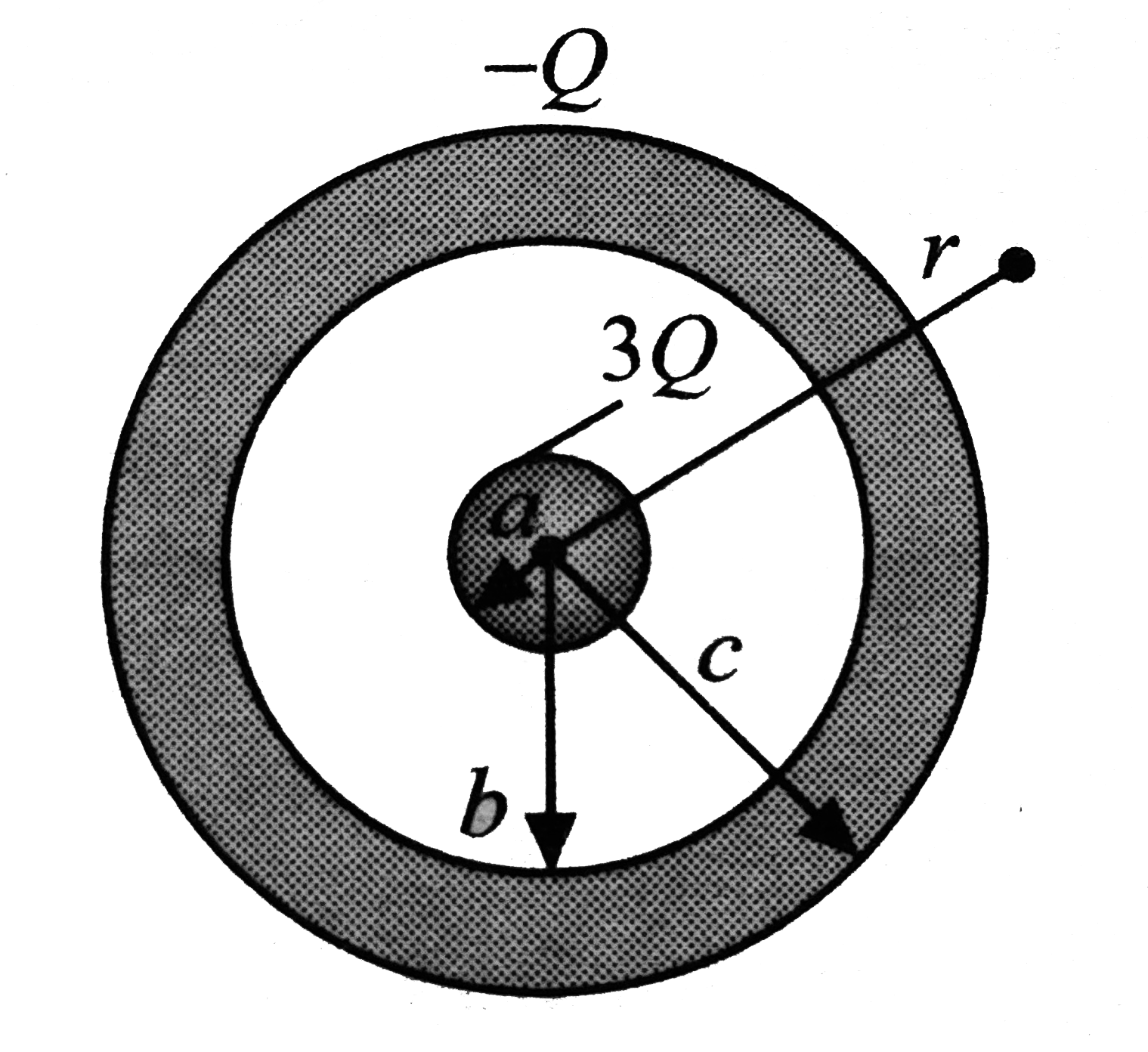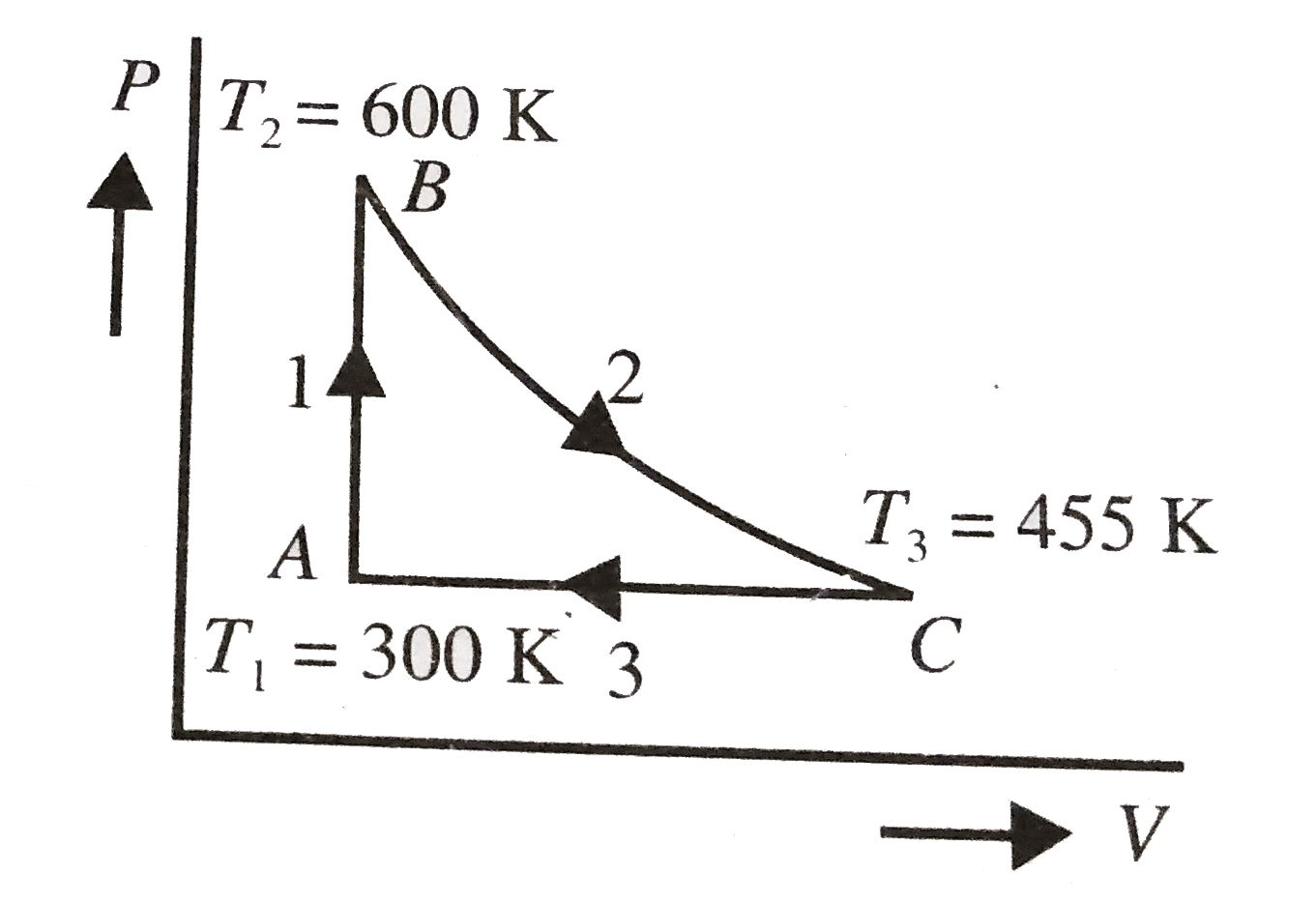Two inflated ballons I and II (thin skin) having volume 600 mL and 1500 mL at 300 K are taken as shown in diagram. If maximum volume of inner and outer balloons are 800 mL and 1800 mL respectively then find the balloon which will burst first on gradual heating.

inner balloon
outer balloon
both simultaneously
unpredictable
The correct Answer is:B
Case I – Suppose inner balloon bursts first 600300=800T2⇒T2=400K
Case II – Suppose outer balloon bursts first 1500300=1800T2,T2=360K
Topper's Solved these Questions
- BOOK - VMC MODULES ENGLISHCHAPTER - STATES OF MATTEREXERCISE - Level-2 (NUMBERICAL VALUE TYPE FOR JEE MAIN15videos
STATES OF MATTER
- BOOK - VMC MODULES ENGLISHCHAPTER - STATES OF MATTEREXERCISE - JEE-Main ( ARCHIVE )17videos
STATES OF MATTER
- BOOK - VMC MODULES ENGLISHCHAPTER - STATES OF MATTEREXERCISE - Level-175videos
STATES OF MATTER
- BOOK - VMC MODULES ENGLISHCHAPTER - STATES OF MATTEREXERCISE - IMPECCABLE50videos
STATES OF MATTER
- BOOK - VMC MODULES ENGLISHCHAPTER - STOICHIOMETRY - IEXERCISE - JEE Advanced (Archive)31videos
STOICHIOMETRY - I
Similar Questions
The molar volumes of KCl and NaCl are 40mL and 30mL, respectively. Find the ratio of the unit cube edges of the two crystals. Assume both have the same packing efficiency.
View SolutionA balloon blown up has a volume of 500 mL at 5∘C. The balloon is distended to 7/8th of its maximum capacity.
Will it burst at 30∘C ?View Solution
Knowledge Check
- Question 1 - Select One
A gaseous system is initially characterised by 500 mL volume and 1 atm pressure at 298 K. This system is allowed to do work as
In isobaric conditions it expands to 800 mL resulting a decrease in pressure and temperature to 0.6 atm and 273 K respectively.
(ii) In adiabatic conditions it is allowed to expand upto 800 mL and results a decrease in pressure and temperature to 0.6 atm and 273 K respectively.
If Gibbs energy change in (i) is ΔGa and in (ii) is ΔGb, then what will be the ration of ΔGaΔGb? (a) 0 (B) 1 (C) between 0 -1 (D) more than 1A0B1Cbetween 0 -1Dgt 1 - Question 2 - Select One
Consider the following statements each with two blanks.
(i) Actually, only about (1)_____ mL of air enters the lungs alveoli for the exchange of gases. The remaining fills the respiratory passage and is termed (2)_____.
(ii) The amount of air which one can inhale with maximum effort and also exhale with maximum effort is termed as (3)_____. It is about (4)_____ in normal adult person.
(iii) During normal quiet breathing, on an average, approximately (5)_____ mL of air is inspired or expired by adult human male in each breath. It is termed as (6)_____ volume.
Which of the following options gives the correct fill ups for the respective blanks numbers from (1) to (6) in the above statement ?A(3)-vital capacity, (4)−4000 mL, (5)−500,(6)−tidalB(1)−100, (2)-residual volume, (3)−functional residual capacity, (4)−3000mLC(1)−350, (2)-dead space air, (5)−1000,(6)-inspiratory reserveD(1)−350, (2)-residual volume, (3)−vital capacity (4)−4000mL
A bolloon blown up has a volume of 300 mL at 27% C. The balloon is distended to 56 of its maximum stretching capacity. The maximum temperature above which it will burst is
View SolutionA balloon blown up has a volume of 500 mL at 5∘C. The balloon is distended to 7/8th of its maximum capacity.
Calculate the minimum temperature above which it will burst.View Solution6 litre H2O is placed in a closed evacuated room of volume 8.27 litre at the temperature 300K. The density of liquid water at 300 K is 1.0 gm/ml. the vapour pressure of water at 300 K is 22.8 mm Hg. Neglect the change in volume of liquid water by vaporization. List IList II(P) Mass of watwer vapour formed (in gm)(1) 6(Q) Moles of water vapour fomed(2) 18(R) Approx. mass of liquid water left (in kg)(3) 3(S) Total moles of atoms in vapour form(4) 1
View SolutionA solid insulating sphere of radius a carries a net positive charge 3Q, uniformly distributed throughout its volume. Concentric with this sphere is a conducting spherical shell with inner radius b and outer radius c and having a net charge -Q, as shown in figure

a. Consider a spherical Gaussian surface of radius rgtc, the net charge enclosed by this surface is .............
b. The direction of the electric field rgtc is .............
c. The electric field at rgtc is ............... .
d. The electric field in the region with radius r, which cgtrgtb, is ...............
e. Consider a spherical Gaussian surface of radius r, where c>r>b, the net charge enclosed by this surface is ................ .
f. Consider a spherical Gaussian surface of radius r, whereb>r>a, the net charge enclosed by this surface is ................. .
g. The electric field in the region b>r>a is ................ .
h. Consider a spherical Gaussian surface of radius r<a. Find an expression for the net charge Q(r) enclosed by this surface as a function of r. Note that the charge inside the surface is less than 3Q.
i. The electric field in the region r<a is ................. .
j. The charge on the inner surface of the conducting shell is .......... .
k. The charge on the outer surface of the conducting shell is .............. .
l. Make a plot of the magnitude of the electric field versus r.View SolutionA flask of 1L having NH3(g) at 2.0atm and 200K is connected with the another flask of volume 800mL having HCI(g) at 8atm and 200K through a narrow tube of negligible volume. The two gases react to form NH4(CI(s) with evolution of 43kJmol−1 heat. if heat capacity of HCI(g) at constant volume is 20JK−1mol−1 and neglecting heat capacity of flask, NH4CI, and volume of solid NH4CI formed, calculated in the flasks, produced, final temperature, and final pressure in the flasks. (Assume R=0.08LatmK−1mol−1)
View SolutionA reversible heat engine carries 1mol of an ideal monatomic gas around the cycle ABCA, as shown in the diagram. The process BC is adiabatic. Call the processes AB,BC and CA as 1,2 and 3 and the heat (ΔQ)r, change in internal energy (ΔU), and work done (ΔW)r,r=1,2,3 respectively. The temperature at A,B,C are T1=300K,T2=600K and T3=455K. Indicate the pressure and volume at A,B andC by Pr and Vr,r=1,2,3, respectively. Assume that intially pressure P1=1.00atm.
Which of the following represents the correct values of the quantities indicated ?
 View Solution
View Solution

